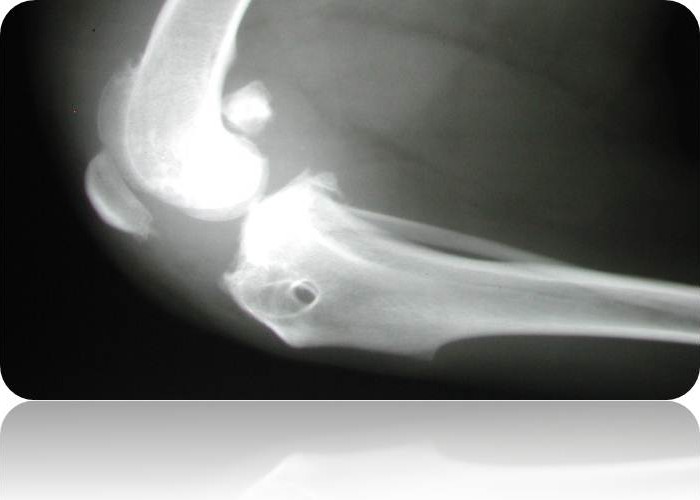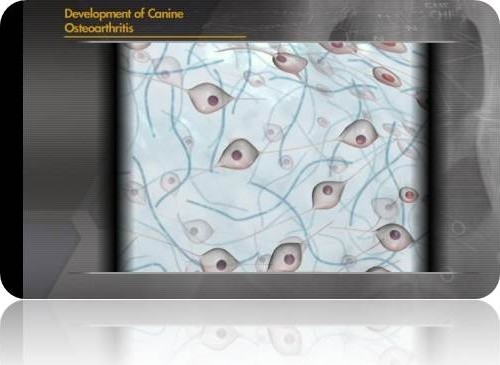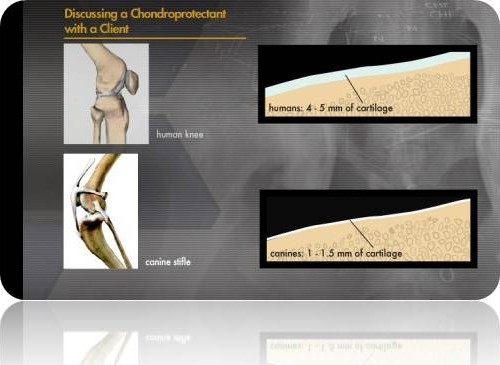

 |
 |
||
|
|||
| Home | |||
 |
| Osteoarthritis (OA) |
Osteoarthritis is an unrelenting disease. Dynamic forces and destructive enzymes cause joint cartilage to fray and crack; gradually the cartilage is worn away leaving us with bone-on-bone contact and bone-on-bone contact is a very painful condition. It is very difficult to effectively control bone-on-bone pain. In the human medical field patients with advanced arthritis would face joint replacement surgery. But we are not dealing with a human patient; joint replacement, while it may be an option in some cases, is not remotely an attractive option for the majority of pet owners. The inescapable truth is that articular cartilage MUST be preserved; Once it's gone, it's gone. Osteoarthritic disease must be attacked aggressively at the earliest possible point. OA patients need to see us at the earliest possible time; as soon as OA is detected. Muscle disease (myofascial disease; myopain) is an expected development with any functional disorder and OA is a prime example of that type of disease. Most health care professional completely overlook the crucial role that myofascial disease can play in the generation of chronic pain for the OA patient. Muscle pain isn't obvious unless you are trained to look for it; unless you develop high level muscle pain awareness. It's easy to take an X-ray and point to a diseased joint and declare "there's the problem"; in reality, the joint is just the tip of the iceberg. Has your veterinarians conducted a muscle-by-muscle patient myopain inventory? If not, you are not in the right place. And we're not just talking about muscles attached to the affected joints; you need to look at all the muscles; the muscles away from the affected joints; the ones suffering from compensatory overuse and misuse caused by muscle imbalance. Our early OA management program is a coordinated multidisciplinary approach:
One of the greatest concerns we have is the late stage at which we so often find ourselves being consulted. Veterinarians are not always suggesting referrals until the patient is in late stage OA. While late stage OA can be successfully addressed, the effort is much much greater and the outcome is never as ideal. Advanced strategies for the severe arthritic are added to the above basic therapies:
|
| Patient Case Reports | |
| MacKenzie | Bear |
| Please Review These Two Excellent Novartis OA Educational Videos |
| Novartis prdocuces one of the many excellent canine NSAID medications: Deramaxx® |
 |
The Development of Osteoarthritis Novartis OA Review Part 1 |
 |
The Preservation of Joint Cartilage Novartis OA Review Part 2 |
| Patient Case Reports | |||